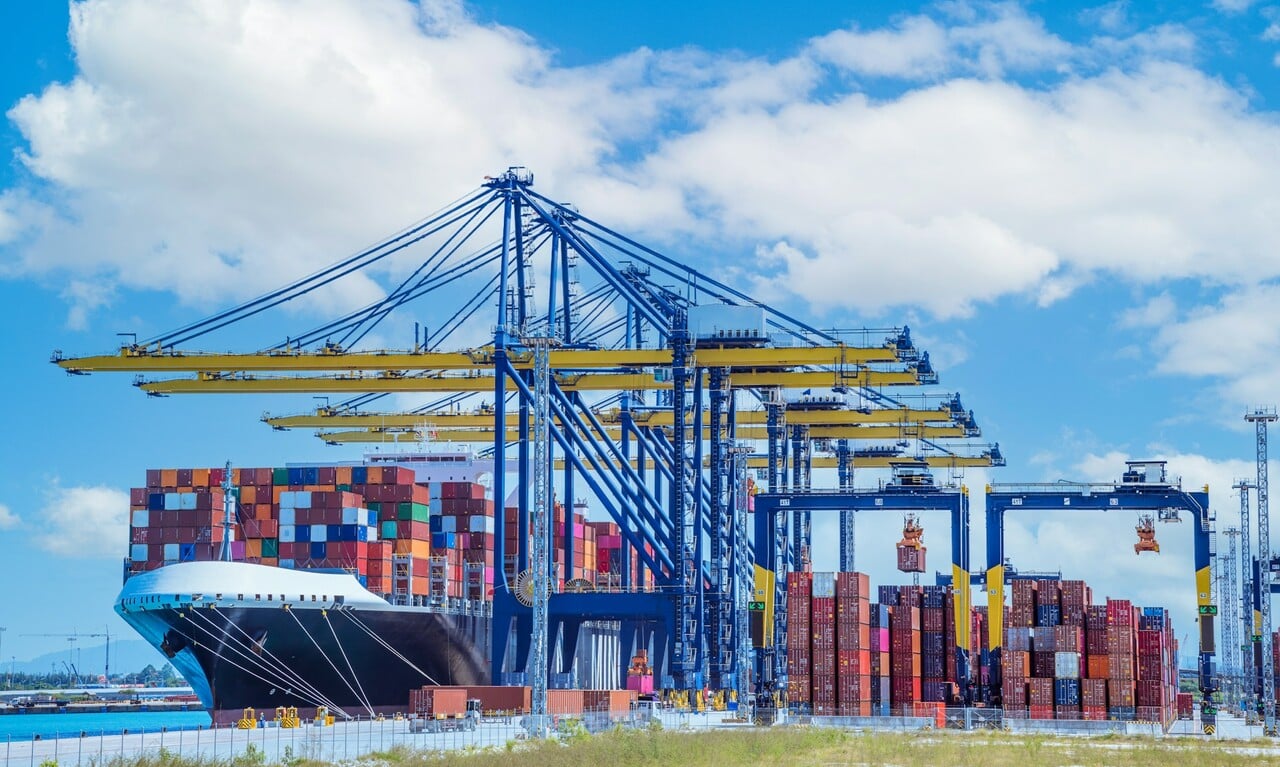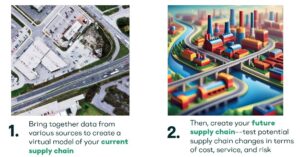
This blog post discusses strategic preparedness for geopolitical disruptions, highlighting supply chain design and empowering decision-makers. Discover actionable insights and innovative solutions to enhance resilience and agility in your organization’s supply chain amidst global uncertainty.
Published by
Published on
November 14, 2024





Geopolitical disruptions are inevitable, driven by factors such as technological advances, shifting political landscapes, and unexpected global events. For supply chain executives, understanding the potential impact of these disruptions and preparing your supply chain can mean the difference between staying competitive or falling behind.
Global supply chains are under tremendous pressure from a variety of geopolitical forces. Disruptions in technology, politics, and logistics are reshaping how organizations source materials, manage risks, and deliver products. Here are some of the main triggers:
Executives often face challenges in responding to geopolitical disruptions, including:

To grow your business efficiently amid internal and external disruptions, supply chain executives must have a plan for how their supply chain will flex and adapt. Supply chain design is the process of creating a digital model of your current supply chain, then testing future changes in terms of service, financials, and risk. Supply chain design can explore every type of decision (site location decisions all the way to SKU-level order detail) regarding the structure and policies of your supply chain, such as:
And so on, and so on. Design the future supply chain you’ll need—and go make it happen.

Executives must thoroughly understand their supply chains to anticipate and respond to disruptions. This involves comprehending key trade-offs and identifying potential breaking points. Key considerations include:
Understanding your logistics' reliance on specific ports helps you anticipate disruptions and devise alternative strategies. A digital supply chain model enables "what-if" scenario modeling, offering valuable insights into your supply chain dynamics and responses to geopolitical changes.
A mature supply chain design capability accelerates an organization's response to geopolitical shifts. This requires:
By fostering maturity, organizations can reduce the time from strategy to execution, enabling faster adaptation to change. Related:7 Expert Tips for Building a Sustainable Supply Chain Design Organization
Supply chain design capability must extend beyond core teams to the broader organization. Implementing user-friendly applications with powerful analytical capabilities allows all employees to make informed decisions quickly. This approach promotes cross-functional collaboration and creates a shared understanding of supply chain objectives.
You can provide stakeholders with the means to analyze real-time data and explore scenarios for precise, informed responses to geopolitical disruptions.
Geopolitical disruptions are inevitable, driven by factors such as technological advances, shifting political landscapes, and unexpected global events. For supply chain executives, understanding the potential impact of these disruptions and preparing your supply chain can mean the difference between staying competitive or falling behind.
Global supply chains are under tremendous pressure from a variety of geopolitical forces. Disruptions in technology, politics, and logistics are reshaping how organizations source materials, manage risks, and deliver products. Here are some of the main triggers:
Executives often face challenges in responding to geopolitical disruptions, including:

To grow your business efficiently amid internal and external disruptions, supply chain executives must have a plan for how their supply chain will flex and adapt. Supply chain design is the process of creating a digital model of your current supply chain, then testing future changes in terms of service, financials, and risk. Supply chain design can explore every type of decision (site location decisions all the way to SKU-level order detail) regarding the structure and policies of your supply chain, such as:
And so on, and so on. Design the future supply chain you’ll need—and go make it happen.

Executives must thoroughly understand their supply chains to anticipate and respond to disruptions. This involves comprehending key trade-offs and identifying potential breaking points. Key considerations include:
Understanding your logistics' reliance on specific ports helps you anticipate disruptions and devise alternative strategies. A digital supply chain model enables "what-if" scenario modeling, offering valuable insights into your supply chain dynamics and responses to geopolitical changes.
A mature supply chain design capability accelerates an organization's response to geopolitical shifts. This requires:
By fostering maturity, organizations can reduce the time from strategy to execution, enabling faster adaptation to change. Related:7 Expert Tips for Building a Sustainable Supply Chain Design Organization
Supply chain design capability must extend beyond core teams to the broader organization. Implementing user-friendly applications with powerful analytical capabilities allows all employees to make informed decisions quickly. This approach promotes cross-functional collaboration and creates a shared understanding of supply chain objectives.
You can provide stakeholders with the means to analyze real-time data and explore scenarios for precise, informed responses to geopolitical disruptions.
Fill out the form to unlock the full content

.png)

.png)
